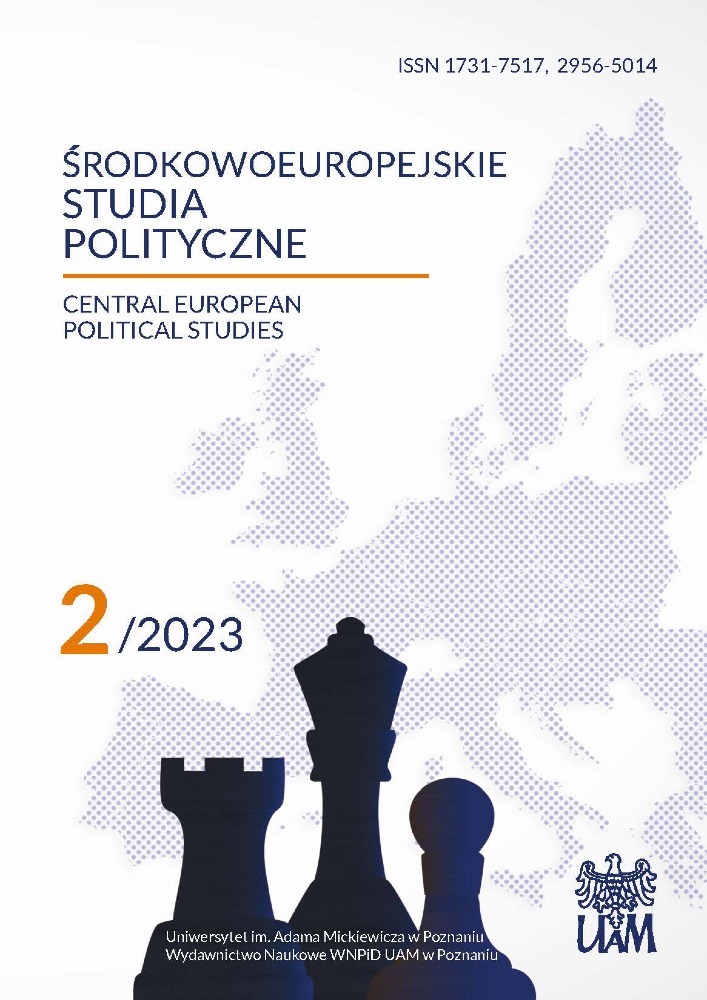Abstrakt
Recenzja
Bibliografia
Aiman A. (2020), Deepfake detection is super hard!!!, https://towardsdatascience.com/deepfake-detection-is-super-hard-38f98241ee49.
Allcott H., Gentzkow M., Yu Ch. (2019), Trends in the diffusion of misinformation on social media, “Research and Politics”, April-June 2019, pp. 1–8, https://journals.sagepub.com/doi/pdf/10.1177/2053168019848554. DOI: https://doi.org/10.3386/w25500
Baranec T. (2021, April 12), Schopnosť Ruska cenzurovať internet značne vzrástla [The Competence of Russia to Censor Internet has rapidly increased], Denník Standard, https://dennikstandard.sk/57378/schopnost-ruska-cenzurovat-internet-znacne-vzrastla/.
Grasseger H., Krogerus M. (2017), Fake news and botnets: how Russia weaponised the web, “The Guardian”, 2.12.2017, https://www.theguardian.com/technology/2017/dec/02/fake-news-botnets-how-russia-weaponised-the-web-cyber-attack-estonia.
Hussain Sh. et al. (2020), Adversarial Deepfakes: Evaluating Vulnerability of Deepfake Detectors to Adversarial Examples, arXiv:2002.12749v3. DOI: https://doi.org/10.1109/WACV48630.2021.00339
Lyu S. (2020), DeepFake Detection: Current Challenges and Next Steps, arXiv: 2003.09234v1. DOI: https://doi.org/10.1109/ICMEW46912.2020.9105991
Kinetz E. (2021, February 15), Anatomy of a conspiracy: With COVID, China took leading role, https://apnews.com/article/pandemics-beijing-only-on-ap-epidemics-media-122b73e134b780919cc1808f3f6f16e8.
Nguyen Th. Thi et al. (2020), Deep Learning for Deepfakes Creation and Detection: A Survey, arXiv:1909.11573v2.
Kironská K., Turcsányi R. (2020), Superveľmoc? (Superpower?), Hadart Publishing.
Šimalčík M., Karásková I., Kelemen B. (2020, August), Čínska prítomnosť na Slovensku: medzi cukrom a bičom [Chinese Presence in Slovakia: Between Reward and Punish], Prague: AMO, http://www.amo.cz/wp-content/uploads/2020/09/Mapinfluence-policy-paper-SK.pdf.
Karásková I., Bachulska A., Matura T., Šebok F., Šimalčík M. (2020), China’s propaganda and disinformation campaigns in Central Europe, https://ceias.eu/wp-content/uploads/2020/08/Mapinfluence_BRIEFING-PAPER_chinas-propaganda_A4_interaktivni_EN_01-1.pdf.
Seal W. (2020, August 18), 7 misinformation trends spreading alongside COVID-19, “Medium”, https://medium.com/@UNDPArabic/7-misinformation-trends-spreading-alongside-covid-19-57fd7a310582.
Tsfati Y., Boomgaarden H. G., Strömbäck J., Vliegenthart R., Damstra A., Lindgren E. (2020), Causes and consequences of mainstream media dissemination of fake news: literature review and synthesis, “Annals of the International Communication Association”, 44:2, pp. 157–173. DOI: https://doi.org/10.1080/23808985.2020.1759443
Turcsányi R. Q. (2020), China and the Frustrated Region: Central and Eastern Europe’s Repeating Troubles with Great Powers, “China Report” 56, 1, pp. 60–77. DOI: https://doi.org/10.1177/0009445519895626
Wakefield J. (2019), Russia ‘successfully tests’ its unplugged internet, BBC,
12.2019, https://www.bbc.com/news/technology-50902496.
Zetter K. (3029, December 26), How Close Did Russia Really Come to Hacking the 2016 Election?, “Politico”, https://www.politico.com/news/magazine/2019/12/26/did-russia-really-hack-2016-election-088171.
Licencja
Prawa autorskie (c) 2023 Andrej Školkay

Utwór dostępny jest na licencji Creative Commons Uznanie autorstwa – Na tych samych warunkach 4.0 Miedzynarodowe.
